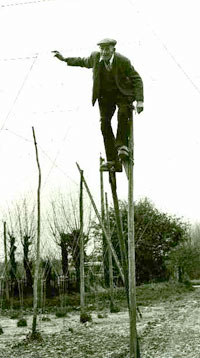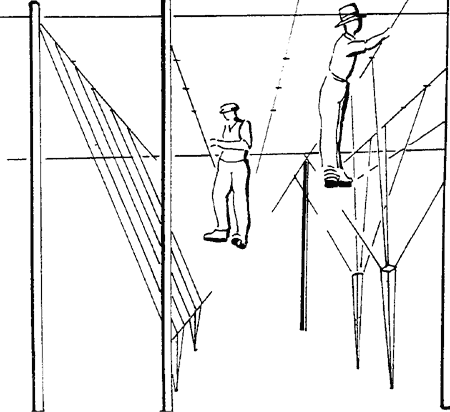How are hops grown?

Man on stilts, 1950
What do you think this man is doing?
Hops grow best in sheltered, sunny hop gardens with rich, fertile soil.
What does a plant need to grow? How can plants be protected against pests?
They are not an easy crop to grow and have to be treated with care. Pests and diseases regularly kill them.
Hop plants have to be given supports for the climbing bines to grow up.
Throughout history farmers have developed different methods of supporting the growing bines.
The mound method
From the 16th century onwards, groups of poles were put up next to individual hop plants each spring to support the growing hop bines. They were taken down in September so the crop could be harvested, and removed from the garden until the following year.

The stringing method
By the twentieth century the stringing method was introduced. Strings (usually coir twine) were suspended from permanent poles and wire. Workers used stilts to tie the strings directly to the overhead wires.

The hop season:
| March: | Stringing is completed |
| April: | Bines usually begin to grow |
| May: | Workers thread the bines up the strings to encourage them to grow in a clockwise direction. This is called 'training'. When 2 - 3 shoots are safely growing up each string, all extra shoots are removed. |
| June-August: | The growing season. The crop has to be protected from diseases and pests. |
| September: | Harvest. The fully-grown cones are ready to be picked. When the cones are picked they are dried in the specially built oast house. After drying and cooling they are put in sacks (called 'pockets') and taken to the breweries. |
Which do you think is the busiest time of year in the hop season?

 Previous Page
Previous Page